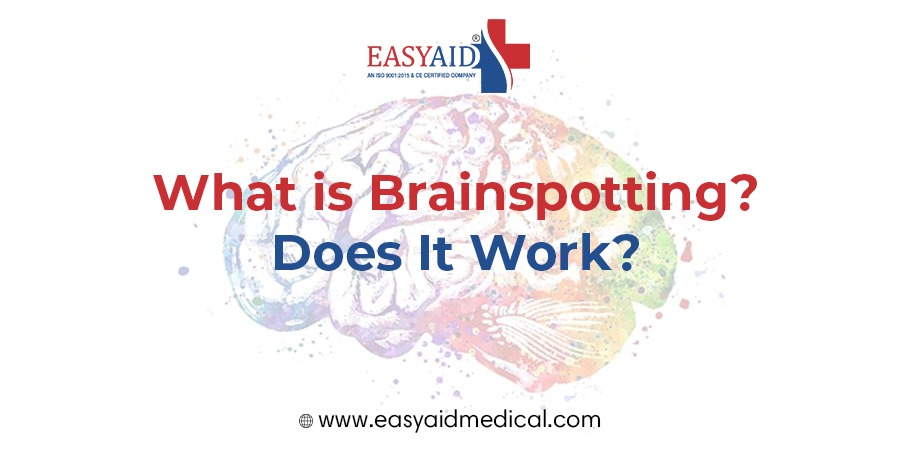What is Brainspotting? Does It Work?
Brainspotting is a highly effective method that has gained significant recognition in recent times for its outstanding ability to address trauma and psychological distress. Created by Dr. David Grand in 2003 Brainspotting harnesses the capacity of the brain to process and heal from experiences. Unlike forms of therapy that primarily rely on conversation brain spotting explores the connection, between the brain and body utilizing visual cues to access and alleviate profound emotional suffering.
In a brainspotting session, the therapist directs the client’s focus towards eye positions known as “brain spots.” These brain spots are connected to areas of trauma, in the brain. By working with these brain spots individuals can. Release barriers paving the way, for healing and personal development through health care products or therapies.
Understanding Brainspotting
Brainspotting is a therapy that has emerged recently and incorporates principles from trauma-focused therapies like eye movement desensitization and reprocessing (EMDR) and experiencing. These therapies acknowledge the link between the mind and body when it comes to dealing with trauma and distress.
The central concept of brain spotting is the identification and utilization of “brain spots.” These brain spots are eye positions for traumatic or emotionally charged experiences in the brain and body. In therapy, when a therapist concentrates on areas of the brain, they can help a person process. Let go of unresolved trauma or distress.
How Brainspotting Works:
During a brainspotting session the client discovers a position. Directs their attention towards a specific spot or area, in their field of vision that triggers a physical or emotional reaction. This might involve following the therapist’s finger or pointer or focusing on a fixed point, in the room.
While the client focuses on the area of the brain the therapist assists them in investigating and dealing with the feelings, emotions, memories, and beliefs that come up. The bilateral stimulation involved in brain spotting, like moving eyes forth or using cues aids in activating the brain’s inherent ability to heal and integrate.
Does Brainspotting work?
While the field of brain spotting is still evolving, there is growing evidence to suggest its effectiveness in addressing a range of psychological challenges. However, note that research on brain spotting is relatively limited compared to more established therapeutic modalities.
Certain research has yielded findings. For example a preliminary investigation published in the Journal of Traumatic Stress discovered that brain spotting alleviated symptoms associated with traumatic stress disorder (PTSD) among a cohort of adults who had experienced childhood abuse. Additionally various studies have indicated outcomes in terms of mitigating anxiety, chronic pain and issues related to performance.
Anecdotal evidence from therapists and clients also points to the potential benefits of brain spotting. Many individuals report experiencing profound shifts in their emotional well-being, increased self-awareness, and relief from trauma-related symptoms.
However, approach brain spotting with a balanced perspective, even though it may not work for everyone. Like any therapeutic approach, results can vary depending on the client’s readiness, the therapist’s skill and expertise, and the issue.
Unveiling the Mechanism of Brainspotting: Eye Position and Neural Activation
At the core of brainspotting lies a fascinating interplay between eye position and neural activation, unlocking the brain’s potential for healing from trauma and emotional distress. This therapeutic approach recognizes traumatic experiences and emotions in the brain as sensory and emotional memories. By strategically targeting specific eye positions, known as “brain spots,” therapists can access these stored memories and initiate the healing process.
Understanding the Brain-Body Connection:
Brainspotting acknowledges the intricate connection between the brain and the body. Traumatic events and feelings are not just remembered in the mind. Felt in the bodys sensory reactions. This means that trauma affects both how we think and how our bodies respond. Brain spotting acknowledges the importance of addressing both our thoughts and physical sensations when healing from trauma in order to achieve recovery.
Locating Brainspots:
During a brainspotting session therapists assist their clients in directing their gaze to identify the location, in the brain associated with their trauma or emotional obstacles. These specific brain areas vary for each person. Are connected to the networks where unresolved emotions or past traumas are stored. The therapist may notice shifts, in the client’s eye movement or body language as an indication of locating a brain spot.
Neural Activation and Processing:
Once the therapist has identified the area they ensure that the client maintains their gaze fixed on it. This intentional focus, on the spot, in the brain triggers the neural circuits connected to any emotional memories that are stored there. By enabling the brain to access these networks it facilitates a process of processing and releasing emotional barriers.
Bilateral Stimulation:
Brain spotting incorporates bilateral stimulation involving tapping or other rhythmic movements that stimulate both brain hemispheres. Enhancing the brain’s capacity to process information and emotions bilateral stimulation plays a role, in facilitating a healing experience.
Also Read – Cataract Surgery
The Role of the Therapist:
The therapist’s role in brainspotting is vital, as they serve as a supportive guide. They establish a nonjudgmental environment for clients to explore and process their emotions. The therapist’s ability to attune to the client’s reactions and effectively identify and maintain the ideal brain spot significantly influences the therapy’s effectiveness.
If you’re thinking about giving brain spotting a try, it’s crucial to connect with a therapist who is trained and certified in this technique. Having conversations with a professional about your goals, expectations, and worries can assist you in determining whether brain spotting is the best approach for you.
Just remember that deciding to seek therapy is a choice, and it’s valuable to explore options until you find what truly connects with your unique needs and experiences.

